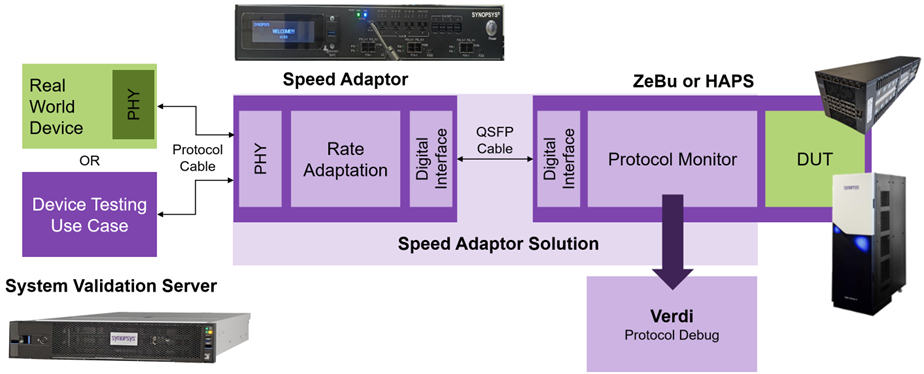It’s now difficult to remember when we didn’t reuse our own IP and didn’t have access to extensive catalogs of commercial IP. But reuse comes with a downside – without modification we can’t finetune IP specs to exactly what we want in a current design. We’re contractually limited in how we can adapt commercial IP, however vendors … Read More
 The AI PC: A New Category Poised to Reignite the PC MarketThe PC industry is entering its most significant…Read More
The AI PC: A New Category Poised to Reignite the PC MarketThe PC industry is entering its most significant…Read More The Rise, Fall, and Rebirth of In-Circuit Emulation: Real-World Case Studies (Part 2 of 2)Recently, I had the opportunity to speak with…Read More
The Rise, Fall, and Rebirth of In-Circuit Emulation: Real-World Case Studies (Part 2 of 2)Recently, I had the opportunity to speak with…Read More Webinar – The Path to Smaller, Denser, and Faster with CPX, Samtec’s Co-Packaged Copper and OpticsFor markets such as data center, high-performance computing,…Read More
Webinar – The Path to Smaller, Denser, and Faster with CPX, Samtec’s Co-Packaged Copper and OpticsFor markets such as data center, high-performance computing,…Read More Webinar – IP Design Considerations for Real-Time Edge AI SystemsIt is well-known that semiconductor growth is driven…Read More
Webinar – IP Design Considerations for Real-Time Edge AI SystemsIt is well-known that semiconductor growth is driven…Read MoreElectronics Up, Smartphones down
Electronics production in key Asian countries has been steady to increasing in the last several months. In April 2025, China electronics production three-month-average change versus a year ago (3/12) was 11.5%, up from 9.5% in January but below the average 3/12 of 12% in 2024. India showed the strongest growth, with 3/12 of 15%… Read More
Arteris at the 2025 Design Automation Conference #62DAC
Key Takeaways:
- Expanded Multi-Die Solution: Arteris showcases its foundational technology for rapid chiplet-based innovation. Check out the multi-die highlights video.
- Ecosystem compatibility: Supported through integration with products from major EDA and foundry partners, including Cadence, Synopsys, and global
Secure-IC at the 2025 Design Automation Conference #62DAC
Secure-IC at DAC 2025: Building Trust into Tomorrow’s Chips and Systems
As semiconductor innovation accelerates, the chiplet-based design paradigm is redefining the landscape of advanced electronic systems. At DAC 2025, Secure-IC (booth #1208) will present a comprehensive suite of technologies engineered to address the… Read More
Podcast EP293: 3DIC Progress and What’s Coming at DAC with Dr. John Ferguson and Kevin Rinebold of Siemens EDA
Dan is joined by Dr. John Ferguson, Director of Product Management for the Calibre nmDRC and 3DIC related products for Siemens EDA. John has worked extensively in the area of physical design verification. Holding several patents, he is also a frequent author in the physical design and verification domain. Current activities … Read More
The Sondrel transformation to Aion SIlicon!
Ollie is a commercially astute senior leader with over 20 years of experience in strategy, business development and sales across the technology and engineering sectors, with a strong track record in scaling businesses and driving growth. He has held commercial leadership roles in FTSE 100, private equity-backed, and startup… Read More
Podcast EP292: The Expanding Worldwide Focus of the 83rd Device Research Conference with Dr. Tania Roy
Dan is joined by Dr. Tania Roy, Associate Professor in Electrical and Computer Engineering at Duke University. She focuses on developing innovative hardware for artificial intelligence using advanced materials beyond silicon. Her research explores reliable gallium nitride (GaN) devices and new materials to move beyond … Read More
Keysight at the 2025 Design Automation Conference #62DAC
Keysight Showcases AI-Ready EDA and Multi-Physics Innovation at #62DAC
Design engineers attending #62DAC who focus on Design Data & IP Management, Analog, Mixed-Signal, RFIC, MMIC, or Multi-Physics should make booth #1408 a top destination. I had the opportunity to speak with Simon Rance, General Manager & Business… Read More
Infinisim at the 2025 Design Automation Design Conference #62DAC
Clock Matters: What Infinisim Is Showcasing at DAC 2025
Optimize by Finding and Fixing Errors Across the Entire Clock Domain
The clock domain is the heartbeat of every high-performance SoC—and at DAC 2025, Infinisim is redefining how design teams approach clock optimization with speed, precision, and confidence.
If you’re… Read More
The Siemens Questa plus AI Story Gathers Momentum
I wrote recently about a Siemens pre-announcement at DVCon on their directions in simulation+AI. On May 13th they officially announced a full spectrum of capabilities under the brand Questa One. Abhi Kolpekwar (VP/GM at Siemens EDA) more fully fleshed out the story for me. I asked why Siemens is late to this simulation+AI party.… Read More







The AI PC: A New Category Poised to Reignite the PC Market